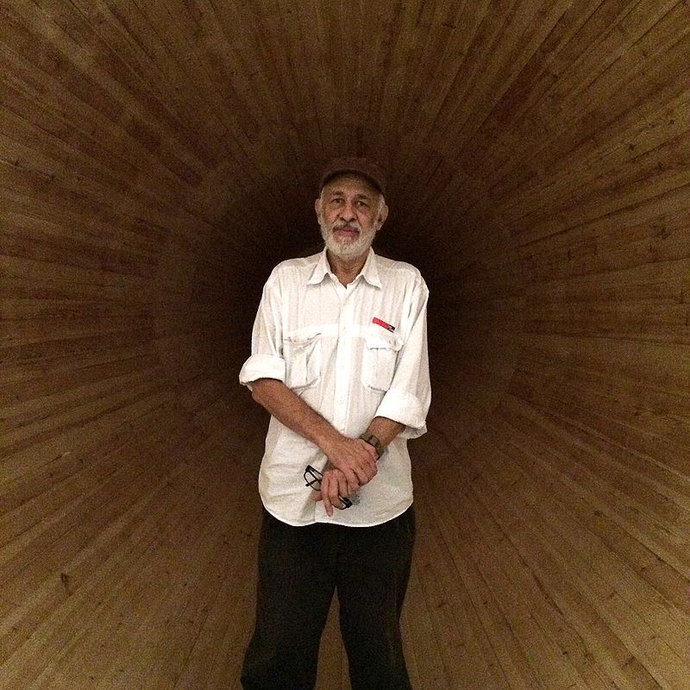
Cildo Meireles
Cildo Meireles is a Brazilian conceptual artist, installation artist, and sculptor. He is particularly renowned for his installations, which often convey resistance to political oppression in Brazil.
Biography of Cildo Meireles
Cildo Meireles was born in 1948 in Rio de Janeiro, Brazil. From an early age, Meireles displayed a fascination with drawing and spatial relations, drawn to the animated film and the creative encouragement of his father, who worked for the Indian Protection Service.
An impactful moment occurred during Meireles' youth when he encountered a makeshift hut crafted by an impoverished man in the countryside. This experience profoundly shaped his perspective, instilling in him a belief in the power of creating and leaving objects for others—a concept that would inform his artistic practice. Meireles' exposure to the beliefs of the Tupi people during his time in rural Brazil later inspired works that shed light on their marginalization in Brazilian society.
Meireles embarked on his formal art education in 1963 at the District Federal Cultural Foundation in Brasilia, studying under Peruvian painter Felix Barrenechea. Influenced by artists like Hélio Oiticica and Lygia Clark, Meireles became immersed in the Brazilian Neo-Concrete movement, exploring the intersection between art and life and responding to political realities through his work.
The political climate in Brazil, particularly following the military coup in 1964, propelled Meireles towards political art. Faced with governmental censorship, he found ways to create subversive yet nuanced art, drawing inspiration from Dadaist techniques. His project "Insertions Into Ideological Circuits," initiated in the early 1970s, aimed to reach a wide audience while evading censorship.
Cildo Meireles' groundbreaking works have been featured in prestigious exhibitions worldwide, solidifying his reputation as a luminary in the realm of contemporary art. Notable venues include the 37th (1976), 50th (2003), 51st (2005), and 53rd (2009) Venice Biennales, where his installations captivated audiences with their conceptual depth and immersive experiences. His participation in the 16th (1981), 20th (1989), 24th (1998), and 29th (2010) Bienal de São Paulo further underscored his influence on the global art scene.
Solo exhibitions at esteemed institutions such as the Miguel Urrutia Art Museum of Banco de la Republica in Bogota (2019), HangarBicocca in Milan (2014), and Museo Nacional Centro de Arte Reina Sofia in Madrid (2013) have provided platforms for Meireles to showcase the breadth and ingenuity of his artistic vision.
Group exhibitions at esteemed institutions such as the Fondation Carmignac (2019), Museu de Arte Moderna de Sao Paulo (2019), and Seattle Art Museum (2017) have provided opportunities for Meireles to engage with diverse audiences and contexts, expanding the reach and impact of his artistic oeuvre.
Cildo Meireles's Art Style
Meireles's practice spans installation art, sculpture, and conceptual art, often expressing resistance to political oppression in Brazil. His works encourage viewer participation, creating immersive experiences that engage the senses and the intellect. Meireles explores themes ranging from the physical to the psychological, emphasizing the interconnectedness of human experience.
Shaped by the social and political conditions of Brazil in the 1960s and '70s, Meireles's art reflects a critical approach to power dynamics and social injustice. He merges physical, cerebral, and sensorial elements in his works, inviting viewers to engage with complex political and philosophical ideas. Meireles's installations often evoke universal themes while addressing specific political events, fostering dialogue and reflection among audiences.
Years:
Born in 1948
Country:
Brazil, Rio de Janeiro